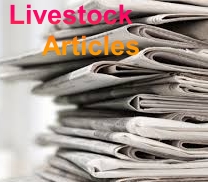Management of the Sow and Her Litter
Pig Farming in South Africa
Sows need the company of other sows.
The adult pigs of the breeding herd have different needs from those of sucklers and growers and care must be taken to meet the special demand of housing, feeding and protection from disease.
Requirements of Pregnant Sows
The sow, is the least demanding when pregnant (called a ‘dry sow’ in the industry) but she still has needs.
A pregnant sow needs the company of other sows and needs protection against hot sun, cold winds and rain.
She needs enough space to move freely and behave like a pig. Most small herds do not use farrowing crates for their sows. Some farmers only confine the sows for the first few weeks after mating to treat problems and observe the sow after her three-week period to make sure she has been successfully served and is pregnant.
The pregnant sow needs sufficient feed but not too much. About 2 to 3 kg per day with all necessary ingredients including a high fibre content such as bran, hay, green feed (if available) and with at least 12% protein. All millers will be able to supply a “sow and boar” meal or pellets and this should make up at least half the sows’ diet with the balance coming from the by-products that are available form dated or stale or sour ingredients.
Note: never feed mouldy or stinking food to pigs and definitely no animal meat. Meat is a very efficient spreader of infectious diseases.
For the last week before her expected farrowing date (keep records) move the sow to her single farrowing pen. This hut, crate or shelter must be weather-proof, pig-proof, very clean and with plenty of bedding to allow her to make a nest.
Requirements of the Newborn Pig Litter
Piglets in farrowing pen with sows. Light strips supplies extra heat in the farrowing pens.
It is very important to realise that the temperature and environment requirements of the sow and her litter are different.
The sow likes it cool, but the piglets need all the warmth they can get. It is desirable to provide them with a ‘creep’ i.e. a closed shelter like dog kennel with a removable lid to allow easy cleaning and observation.and replacing damp or smelly bedding. The best bedding is pine shavings. Protect the entrance so that piglets can enter but not the sow; especially when feeding the piglets with their very expensive ration.
The sow, unless she is in a farrowing crate, will be inclined to lie on top of slow sucklers and there will be losses due to crushing.
The sow needs unrestricted clean water always available. The sucklers will start drinking water to supplement the sow’s milk when a few weeks old.
After giving birth, the sow needs a much richer diet when producing milk. It is ideal to feed the lactating sow ‘lactating sow feed’ and plenty of it – 6kg per day is not unusual. The lactating sow must never be hungry. Feed her three times per day to prevent overloading her stomach.
Piglets will start eating their mom’s food out of curiosity from a week old or so but the sow food is indigestible for the newborns. Rather give the babies a weaner ration from about ten days before they are weaned and restrict the daily amount to 250 g (size of a coffee mug) for the next five days, Increase the amount daily so that their digestive systems are ready to cope with dry food at weaning.
Requirements of the Boar
The boar can stay with dry sows between services.
The boar is sometimes called the most neglected animal on the farm despite supplying half the genes and therefore the quality of the next generation. The needs of a boar are fairly simple:
He needs his own boar pen to be used for serving sows. Always bring the sow to the boar and keep records of his services.
Between services he can stay with the dry sows – his presence is beneficial and has a settling effect. He will also detect sows that are on heat if they have aborted and he may well have served them. Keep records.
Often the boar is allowed to be part of the herd in a free-range situation. The serving of sows on heat will be on a “let nature take its course” basis. This has some disadvantages. The pig farmer may not know which sows are pregnant and from which day and by which boar (if there is more than one). Also, the expected date of birth will not be known, making it difficult for planning.
If there is more than one boar in a herd, they may battle for seniority. The dominant or only boar will have no restriction on how many times he serves each sow. This can result in tired, sub-fertile boars and injured sows or especially, gilts.
The boar needs regular and thorough treatment for mange as he is usually the spreader of mange to the whole sow herd. This is transmitted during the mating time of 6 to 15 minutes. (Treatment for mange is not difficult and is effective if instructions are followed.)
Limit the feeding of a boar to prevent him from becoming overweight, lazy, infertile and a bully. His ration and amount will be the same as for the dry sows.
Management of Weaners and Growers
Pig Farming in South Africa
Weaning is a highly stressful time for piglets.
This section deals with the care of weaner piglets and the older grower pigs.
Often, new pig farmers don’t realise that these genetically advanced modern piglets have about 10 weeks to develop the body conformation and built-in meat-to-bone ratio which enables them to grow from a birth-weight of 1 to 1.5 kg to a slaughter weight of 90 kg or more in just 6 months.
This is under ideal circumstances of feed, temperature, ventilation, hygiene, comfort, disease prevention and treatment, parasite control and stockmanship.
‘Stockmanship’ refers to the ability of the owner to become aware of the messages that pigs are sending, about themselves, to their carers all the time. These will be the sights, sounds, smells, temperature and wind, food refusal, failure to grow, scours on the floor and excessive mortality. The list is long and the sensitive stock-person will react or seek help.
Weaning of Piglets
To ensure better production, the first month after weaning piglets is critical and should receive careful attention.
Even at a weaning age of 6 weeks, the piglet is being deprived of the benefits of family comforts at a much earlier age than when weaned by the sow herself.
The reason for weaning ‘early’ is to give the sow some recovery time before sending her back to the boar, which she will readily do. A sow is expected to produce at least two litters per year, but will often need at least one cycle of three weeks to regain condition.
The weaning age is not strictly set and there is some benefit in ‘split-weaning’. This means taking some of the stronger sucklers to the weaner house a week sooner than the others. Because of less competition, smaller piglets now get the chance to increase their milk intake.
The weaning procedure is stressful for piglets in a number of ways:
Piglets are deprived of the rich and copious supply of sow milk, available at hourly intervals when the sow lets down her milk.
They will have to get used to new surroundings, smells, feed containers and noises.
Piglets might be mixed with other weaners and may have to establish dominance through battles.
If piglets of different ages are mixed, there will be new sources of infections and parasites, challenging the immune systems of the previously unexposed younger group piglets.
Procedures at Weaning
All pigs need to be identified by a registered number.
South African law requires that all animals must be identified, which means a registered ear tattoo for pigs. The number or code will be the same as the brand or tattoo on the owner’s cattle. The number is issued by the Theft Unit of SAPS and requires filling in a form and paying for the code. The State Veterinary Office can help.
Routine procedures at weaning may also include vaccination and mange treatment by injection. Tail and eyeteeth clipping are not necessary but an iron injection should be given in the first week of life.
Care of Weaners
Pig farmer checks heat lamp to ensure it is working properly.
The main rules for the pig farmer about the care of weaners is to provide a “nursery”, which is separate, secure and under the attention of the carer, who must ensure that these little pigs are warm, dry, comfortable, clean and well-fed.
Because the growth pattern and potential carcass value are determined at this age, it is vital that weaners should receive the best feed possible.
Every miller or co-op will have a weaner ration with 18% to 20% protein, in meal or pellet form. It will be expensive but the small-herd pig farmer’s best investment.
Care of Growers
This term has replaced the old term ‘fatteners’ in English and is used for the young pigs coming out of the weaner section at about 10 to 12 weeks old.
Growers are the least demanding of the age groups. Their business is to eat as much as the farmer can give them, provided it is not spoilt with dirt, mould or plastic. A 16% protein grower ration should form the basis of grower pig’s feed program. Some savings can be made by supplementing the grower’s diet with regular supplies from supermarkets, dairies, canteens and vegetable wholesalers. This excess old food can be used to extend the balanced diet without over-doing the carbohydrates. Do not feed too much carbohydrate. Some millers will supply a supplement as an additional special additive.
Because pigs will eat almost anything, it does not mean they should be given rubbish to eat. The better the food, the better the growth rate and the carcass grading.

.jpg)






